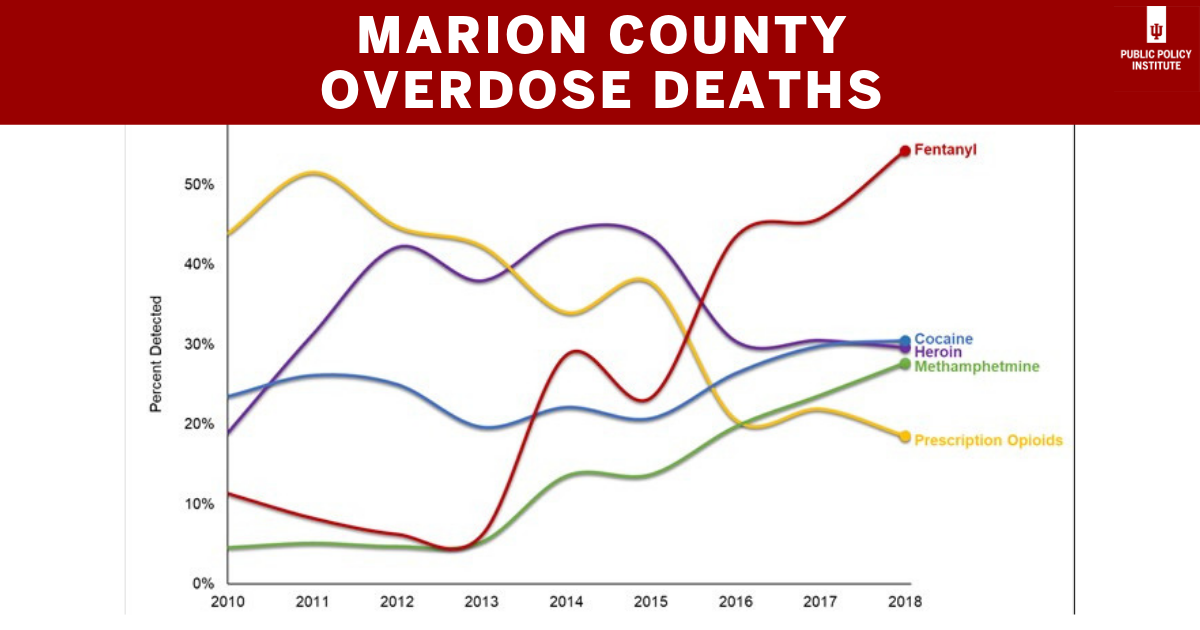INDIANAPOLIS – New data from the IU Public Policy Institute’s Center for Health and Justice Research shows a drop in the number of accidental overdose deaths in Marion County, including those that were opioid-related. Despite that decline, opioids were still present in 78 percent of the county’s 361 overdose deaths in 2018.
That same year, fentanyl—a synthetic opioid—appeared in 54 percent of the county’s overdose deaths. Methamphetamines also appeared in overdose deaths at higher rates and numbers in 2018 than in previous years.
When comparing 2018 to 2017, the number of deaths involving fentanyl increased 5 percent; the number involving meth grew 4 percent. During the same timeframe, the number of overdose deaths involving any opioid, prescription opioids, heroin, benzodiazepine, cocaine, and alcohol all decreased.
The information comes from a unique analysis provided by the CHJR team at PPI. Researchers there combine death reports, toxicology reports, and information from police reports to provide a more holistic view of the circumstances surrounding a person’s death. When reviewing the data, it is important to note that one case may involve multiple substances. This analysis provides critical updates to state and local leaders, first responders, and other groups on the front lines of the opioid epidemic. It also allows researchers to see when trends begin to shift.
“This work helped us learn that prescription opioids weren't the primary problem anymore; we saw when fentanyl started being combined with heroin," says Philip Huynh, PPI project analyst. “By being the first ones to actually look at toxicology data, we were the first ones to know about the recent rise in cocaine deaths. That doesn’t happen unless you’re analyzing the toxicology data and information from the scene."
PPI’s research is part of an ongoing project funded by a federal grant from the Centers for Disease Control & Prevention that was awarded to the State of Indiana. The CHJR team will continue providing updated data and analysis while working with Indiana State Department of Health to further expand the department’s efforts statewide.
Find more information on the data and the analysis process at this link.



